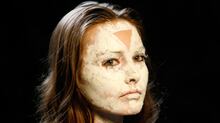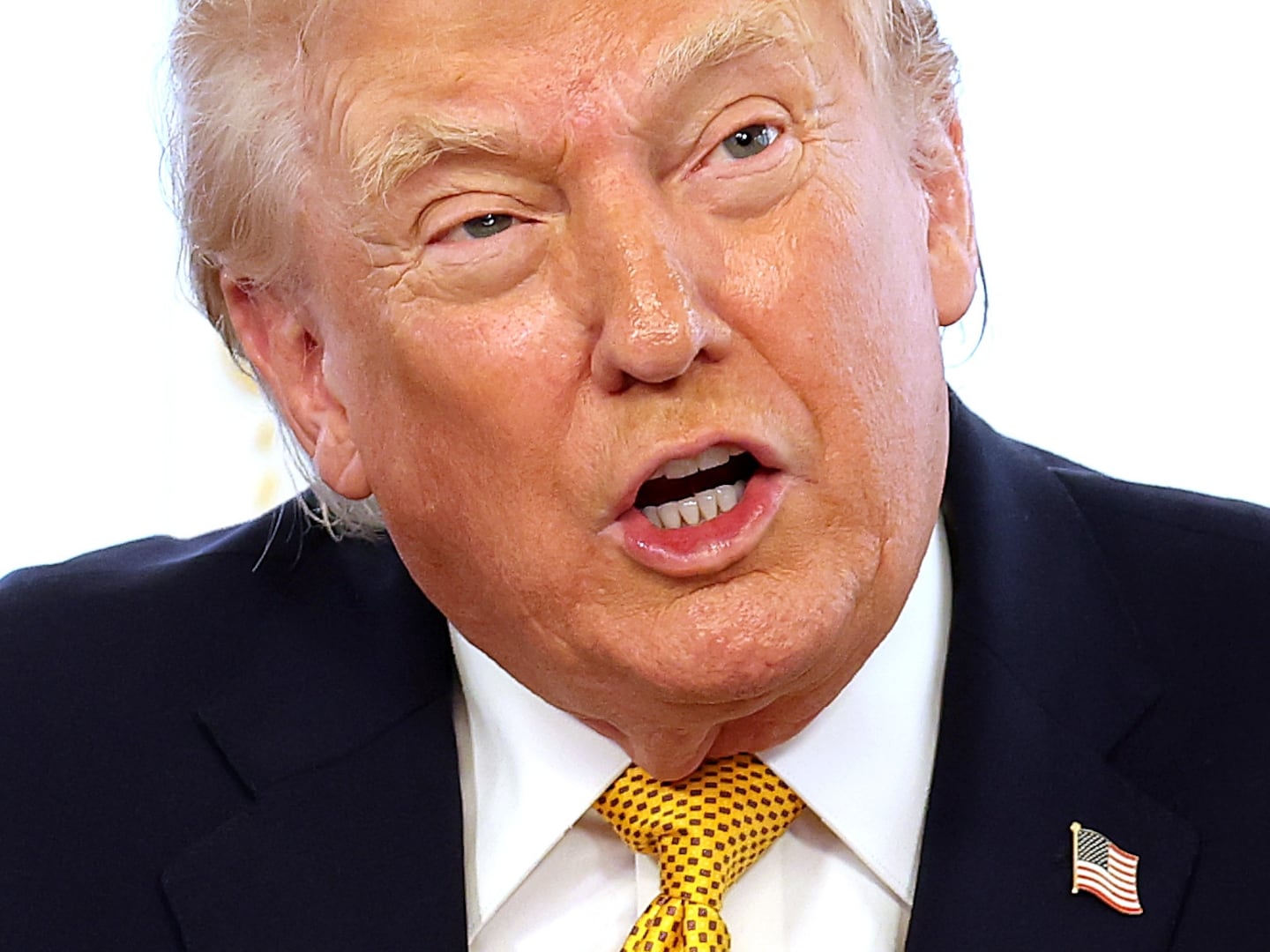Fashion can contain layers of literary, symbolic, and political meaning. The question is whether fashion is like an onion or an artichoke: Peel away the layers and is there a heart? And is it in the right place? While perversions of all kind are common to see on catwalks, political statements are rarer and more risky. Here are 10 designers who mixed style and strong statements (or at least tried to and failed), or were too isolated in fashion's often insular world to realize that their lovely designs were getting tangled up in reality.
1. Berlin-based designer Patrick Mohr recently sent out the homeless sellers of the Strassenfeger magazine (Berlin's The Big Issue) alongside professional models for his collection during Mercedes Benz's Berlin Fashion Week in July. All the models navigated a catwalk covered in black trash bags, with their faces caked in mouldy green mud (remember Zoolander’s “Derelict” show, anyone?). But the pretty models wore jeans and the homeless participants were dressed in ill-formed sacks like creatures from a children's theatrical performance. Mohr claimed he wanted to let the homeless models "take part in a world usually inaccessible to them." Maybe next season he could design nice suits for them and take them to a luxe dinner.

2. Two years before offending some sensibilities by lowering trousers to show derriere-cleavage and elevating the "builders' bum" to high fashion, British enfant terrible Alexander McQueen attacked more traditional cleavage in his S/S 93 Nihilism student show at Central Saint Martins. There, he covered models' breasts in fake blood and wrapped their bodies completely in plastic wrap. McQueen's muses were the deformed mutant mannequins created by the famed London artists known as the Chapman Brothers, but to a few too many in the audience what they evoked were mastectomies. McQueen's earlier Highland Rape show, a rant against Brit injustice in Scotland, was paradoxically perceived as gorgeous but historically a bit prickly.
3. Japanese designer Rei Kawakubo insisted that she was innocent of any nightmarish connotations evoked by her 1995 Comme des Garçons menswear collection featuring models with shaved heads, stripped pajamas, and woolly sweaters with numbers and boot-mark-like prints. The collection, which Kawakubo titled Sleep, got a rude awakening after fashion critic Suzy Menkes pointed out that somnambulist insensitivity on the 50th anniversary of the liberation of the concentration camps meant getting the collection from the catwalks into stores would remain a dream for Kawakubo.

4. The Orthodox Jewish community was far from pleased when Jean-Paul Gaultier dressed Christy Turlington, Naomi Campbell, and bald lesbian model Ève Salvail as Hasidic Yeshiva students for his1993 collection. However, many Jewish fashionistas were flattered by the homage and Gaultier's good-natured admiration for the Orthodox aesthetic.
5. For his Spring 2000 Dior collection, John Galliano was inspired by Diane Arbus’ photographs of the mentally ill and by the rough elegance of homeless people he spotted on his daily jog by the Seine. So with some success he dressed models in tattered layers marked with cigarette burns, tangles, and tears topped with straitjackets set askew. Suzy Menkes reported for The New York Times that, "beneath the street bum's survival kit of dangling trash and (empty) miniature liquor bottles, there were flashes of Galliano's fashion genius."

6. South Korean designer Ha Sang Beg is a real pop polymath who is a celebrity of the highest order in Seoul. He presents a hugely popular style program on Mnet and is a star DJ; he’s also a former top model and learned tailoring in London. For Spring 2010, the figurehead of fun in Korean fashion presented a show packed with powerful antiwar imagery pivoting around survivalist jackets, army gear in ghostly white, and gory pink patterns on the sharp navy mens' suits intended to resemble raw open flesh torn apart by a hollow-point shot. Yet Sang Beg backed away from the symbolic strength of his message, claiming to "just have a bit of a fuck-up attraction to violence."
7. When Karl Lagerfeld embroidered phrases from the Koran in grey pearls on a black bustier, worn by a beaming, bodacious Claudia Schiffer for his 1994 catwalk show, he thought that he was appropriating an Arabic love poem. Members of the Indonesian Muslim Scholars Council, an organization of clerics in Jakarta, spotted the difference and did not reciprocate Lagerfeld's intended sweet sentiment. So, Lagerfeld was compelled to make a public apology to the Muslim community, destroy the dresses, all catwalk photos, and the photo negatives. If only he'd known someone with a tattoo in a foreign language to tell him that its worth the trouble to get a translator.

8. In 1998, British/Turkish Cypriot designer Hussein Chalayan presented 12 models in a row, each only wearing a chador ranging from chin- to floor-length. Though a few models' bodies were nude, the solemnity and simplicity of Chalayan's overt political statement turned the show into a powerful piece of performance art. Chalayan's own cultural investment in the topic and his eloquent discussion of the issues surrounding Muslim womens' rights guaranteed that his show was taken seriously.
9. Ann Sofie Back's Fall/Winter 2008 schadenfreude collection struck raw nerves by playfully ribbing the readers of celebrity scandal sheets. The show itself focused on sullied, morning-after anti-glam—G-strings wrapped around models’ thighs, T-shirts with cubist patterns inspired by pixelated crotch shots, and oversize men’s suit jackets slung over slender shoulders. Some loudly decried it as a "date rape chic" collection. But others got the joke and just blushed sheepishly while stuffing their copies of Heat! deeper into their IT bags.

Ana Finel Honigman is a New York-born and Berlin-based art and fashion critic, curator and Ph.D. candidate at Oxford University.






